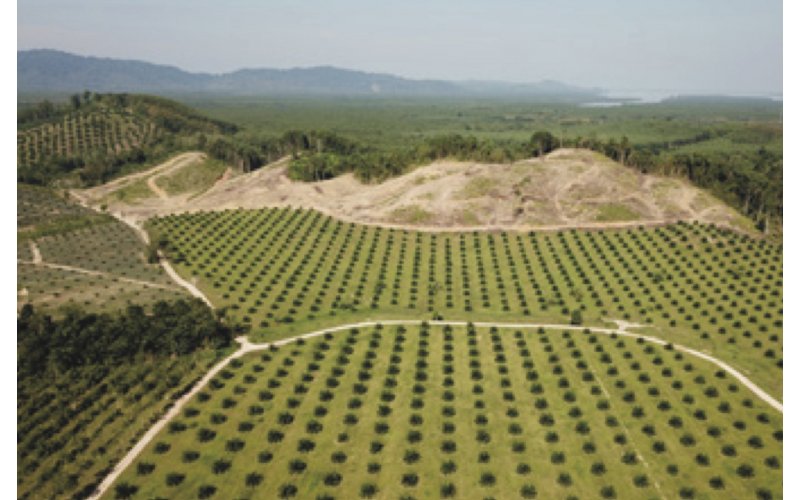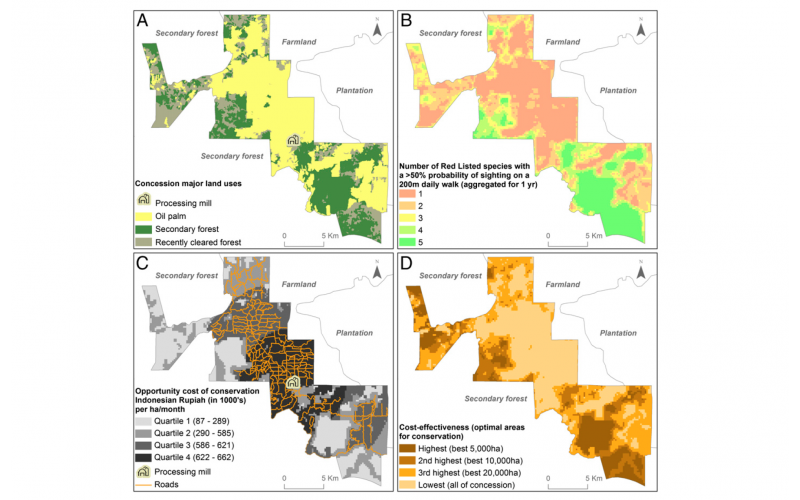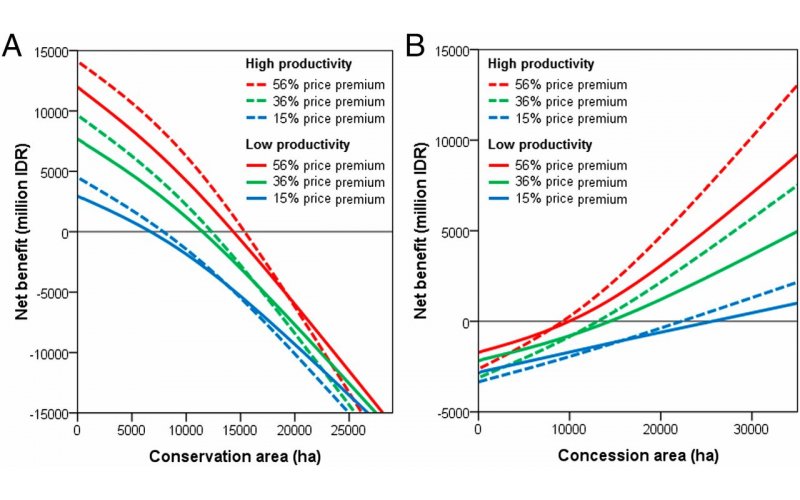Successful conservation on private land depends on three factors: the conservation effectiveness for the target species; the private costs in reduced productivity; and the private benefits that conservation provides, for example, by enhancing the value of remaining production.
Research on palm-oil production in a major tropical biodiversity hotspot found that the levels of both conservation effectiveness and private costs were inherently spatial. Changing the location of conservation activities can, therefore, have great impacts on both their effectiveness and private cost implications.
An economic choice experiment revealed that consumers’ willingness to pay for conservation-grade palm-oil products has the potential to incentivise private producers to engage in conservation activities that support vulnerable IUCN Nature Red Listed species. However, these incentives vary according to the scale and efficiency of production and the extent to which conservation programs are designed to optimise cost-effectiveness. By combining information on the spatial variability of conservation effectiveness and private costs, with market information on consumer willingness to pay, it should be possible to design successful and cost-effective conservation schemes.



